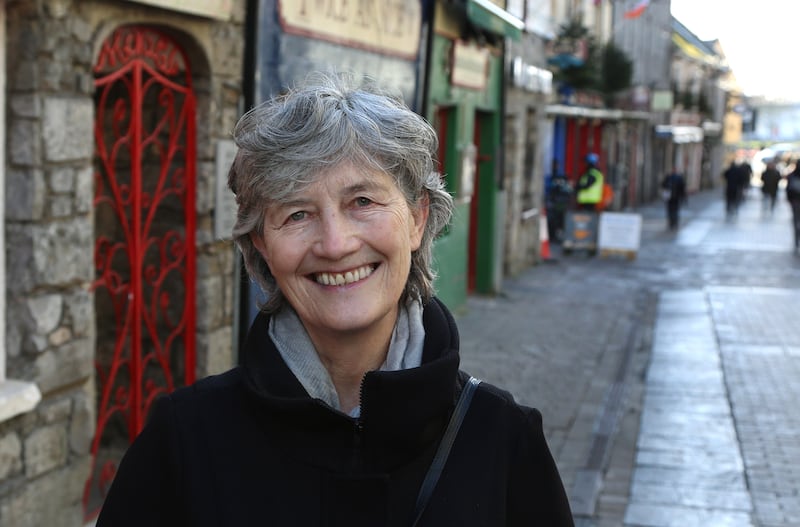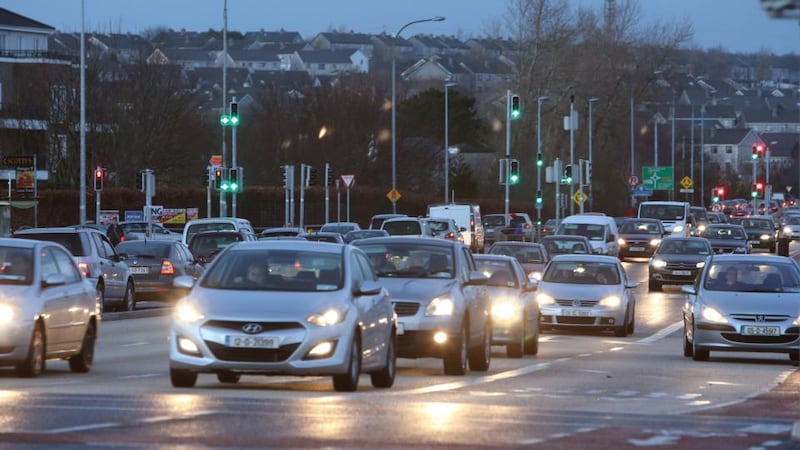It is Galway festival time.
“When is it not?” might be the reflex response of many. The city’s custodians are adept at dreaming up festivals to chase away the damp seasons.
But the July weeks when the arts festival morphs into race week are the traditional high point of the summer in the west. This week, the weather has been typically unpredictable. No matter. The canopies outside the pleasure pots of Shop Street and Quay Street are teeming with life.
“Galway occupies a very definite place in the Irish psyche,” says Dr Pat Collins, an economic geographer at the University of Galway. “And especially right now, for these two weeks. Eyes land on Galway and people get to make up their mind about the city.
“But that’s not real. You can’t make your mind up about how a place is over two weeks. The city wears the weight well of this cultural capital,” he says.
“Of course, traffic is a perennial issue. That’s down to the history of the urban morphology of the place.”
Collins is a Galwegian, and it happens that his profession coincides with an intense personal interest on how his city has evolved over the past 50 years. Galway’s traffic issues have become worthy of a festival in their own right. Collins believes the endless roundabouts and lines of snaking traffic inching towards the medieval heart of the city is a consequence of decisions made when Ireland was a different place.
“This is no consolation to those in traffic jams, but if Galway wasn’t successful, it would have those traffic issues. But of course, they are endemic of bad planning over the past 50 years that have seen the population treble and which has seen the making of a Galway that is very much not the Galway that people see in their mind’s eye – these two weeks of the arts festival and the races. It is a hodge-podge of badly planned suburban sprawl that has seen the city move in a linear fashion east and west and the result of that is the kind of traffic congestion we now see.”
[ Galway’s first 24-hour bus route among plans to overhaul networkOpens in new window ]
In his forthcoming book Galway: Making A Capital of Culture, Collins will argue that Galway is a unique example of a Free State city. Limerick, Cork, Dublin and Waterford were fully formed. “But Galway became a city since 1922,″ he writes.
Today’s issues, he believes, originate in the foundational decision, taken in the 1950s, that all industry would be located on the east side of the city, where the various industrial parks began to spring up.
“And up against that was the fact that the west side of the city was more desirable to live in – it had Salthill, the sea. So, we had this linear division. And we built a bridge in the 1980s. And built it way too close to the city centre. It should have been pushed much further out in deference to growth patterns. So, we didn’t help ourselves.”
Independent TD Catherine Connolly has been involved in politics for 24 years, 17 of those at local level. One of the questions she is most frequently asked is why civic attempts to deal with congestion and infrastructural issues move so slowly.
“I don’t know,” she says. “What I have seen, in my 17 years, is a huge lobby group behind cars. I was in a minority in thinking that a ring road and N6 project was never going to be a solution. And there was never a plan B. When it hit a cul-de-sac through Europe, there was no plan B. We have gotten it wrong.”
When she walks through Galway, she admits to feeling conflicted. She lives in the heart of the city so strolling through town is fabulous. “However, the utter sense of frustration I have had for so long remains.”

She points out that Galway still has no cohesive park-and-ride facility even though it was listed as an objective in the city development plan in 2005. “We still have the National Transport Authority looking at it – they are identifying sites.”
The public transport system falls well short of what is needed. Parents being unable to avail of the school transport system for their children because of limited seating is a big issue. “To me, that is a positive challenge – people wanting to use public transport,” says Connolly. “But unless it is solved, they have no choice but to take to the roads, further pressurising the traffic numbers during the peak hours around school opening and closing.
“For me, the transport we had planned was already dated in terms of population and climate challenges. We are awaiting a review in 2023. It included light rail. But it was dated even in 2016 and we are still waiting. The potential to get it right is fantastic. We could get it right as a green, thriving city.”
In considering an idealised future for Galway, Collins sometimes finds himself returning to one of the most weathered and iconic parts of the city.
“Nuns Island fascinates me. This was the industrial centre of the west – whiskey and tanning and milling. A manna type of environmental sustainability because it was all powered by the water coming through the city and pulling from natural resources and making products and exporting them. The things people write about now as the future: well, that was the past here. So, we have to bring making back to the city.”
He is adamant that the haphazard trend of simply continuing to build further and further out east and west has to end.
“We are at a juncture in Galway. We are looking to double our population over the next 30 or so years.”
He says to continue on as before “is going down the path of unsustainability- environmentally but, more worryingly, socially. There will be a stretching of the differences between people. Utilising vacant spaces in the city centre is the answer.”
Connolly points out that a persistent problem is that there is no master plan for Galway city. There is no cohesive vision. She argues that Galway’s pioneering implementation of incineration and recycling 20 years ago is indicative of an inherent willingness to adapt among the locals. Some 24,000 people signed the petition for a feasibility study on light rail. “People have been let down by matching actions.”

Collins lives close to Moycullen, an attractive village which is notionally just a quick spin from the city. At the moment, it is mired in a bypass project.
Collins sees the bypass as a perfect example of doing everything wrong.
“The volume of concrete and stone is mind-boggling. Trees ripped down. All of that. It is very obviously a 1970s plan enacted upon in the 2020s.”
He was part of the group campaigning for a greenway through Connemara – a notion which, one imagines, would have significant tourist appeal. He felt that the attitude was: ‘Okay, okay, a greenway, great. But first: let’s build this very big road to go around this small village. Then we will talk about cycle paths and bus stops.”
If the sun shines during race week, Galway will be bliss. For locals, it is easy to forget about the grind of getting around at this time of year. School is out. Many businesses close. In a way, the usual problems are suspended.
But they’ll return with September. Collins empathises with those in charge of trying to solve what has become an almost impossible task of keeping Galway’s choked arteries moving.
“But we will look back on that from the wrong side of history and say, here we had an opportunity to talk about alternative mobilities and to move away from private car dependency. But first we will just build one more road.
“Europe is burning. When is the now if not now? How much more do we need to be told? I sit in that traffic as well. I try to cycle around it. I honestly don’t know. But I do know we can’t hide behind one more road any more. Everything is telling us that the time is now.”


















